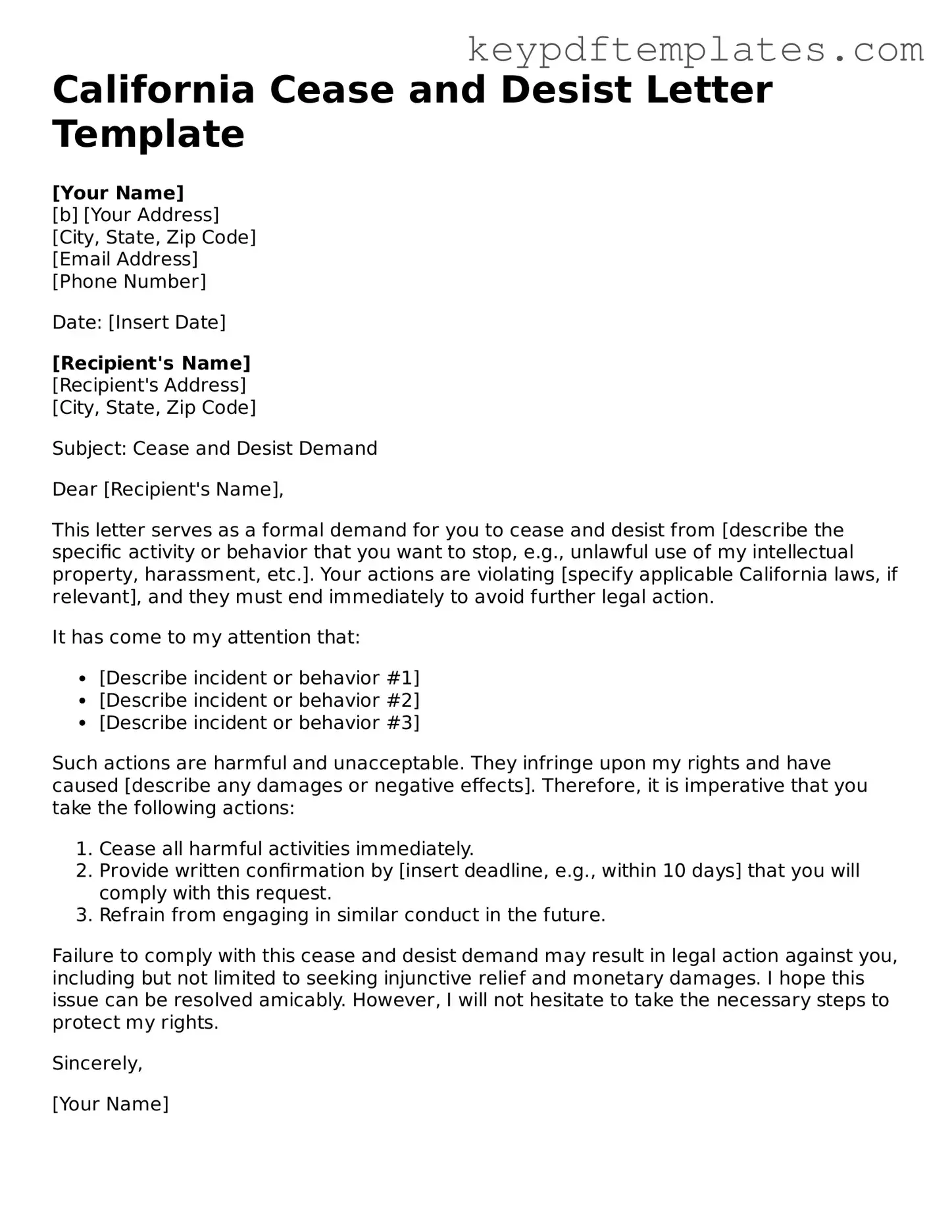Legal Cease and Desist Letter Document for the State of California
A California Cease and Desist Letter is a formal document that requests an individual or organization to stop specific actions that are deemed harmful or unlawful. This letter serves as a warning and outlines the sender's intention to take further legal action if the behavior does not cease. Understanding how to properly use this form is essential for protecting your rights and interests.
Modify Document Online
